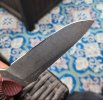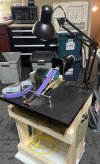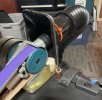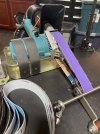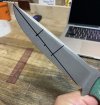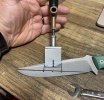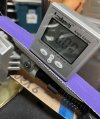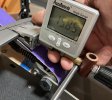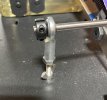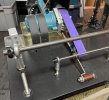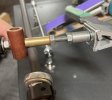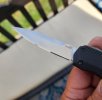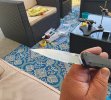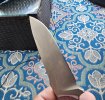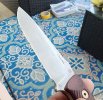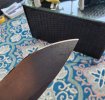- Joined
- Dec 5, 2005
- Messages
- 28,356
This thread is for sharing tips and tricks relating to keeping your CPK operating at its best.
Someone had recently asked about keeping a CPM 3V blade, with the Delta heat treatment protocol, maintained while out and about.
In the attached vid, I tried to show how a damaged edge bevel can be brought back to service in ten minutes using one simple and easy to get tool. While the results are generally better with more sharpening implements and more time, the video shows how little it takes to get your Delta 3V edge back to at least 80%, (I made that figure up) when you're out in the boonies and away from your tools.
CPM 3V, with Delta heat treatment, is a rewarding steel for those who like sharpening. It'll support a very keen edge, and isn't so hard as to be frustrating to deal with. To me, it's not dissimilar from relatively simple carbon steels like 1095 or W2.
Share your sharpening tips, tricks and hacks, and ask your questions about sharpening your CPKs here!
Someone had recently asked about keeping a CPM 3V blade, with the Delta heat treatment protocol, maintained while out and about.
In the attached vid, I tried to show how a damaged edge bevel can be brought back to service in ten minutes using one simple and easy to get tool. While the results are generally better with more sharpening implements and more time, the video shows how little it takes to get your Delta 3V edge back to at least 80%, (I made that figure up) when you're out in the boonies and away from your tools.
CPM 3V, with Delta heat treatment, is a rewarding steel for those who like sharpening. It'll support a very keen edge, and isn't so hard as to be frustrating to deal with. To me, it's not dissimilar from relatively simple carbon steels like 1095 or W2.
Share your sharpening tips, tricks and hacks, and ask your questions about sharpening your CPKs here!

